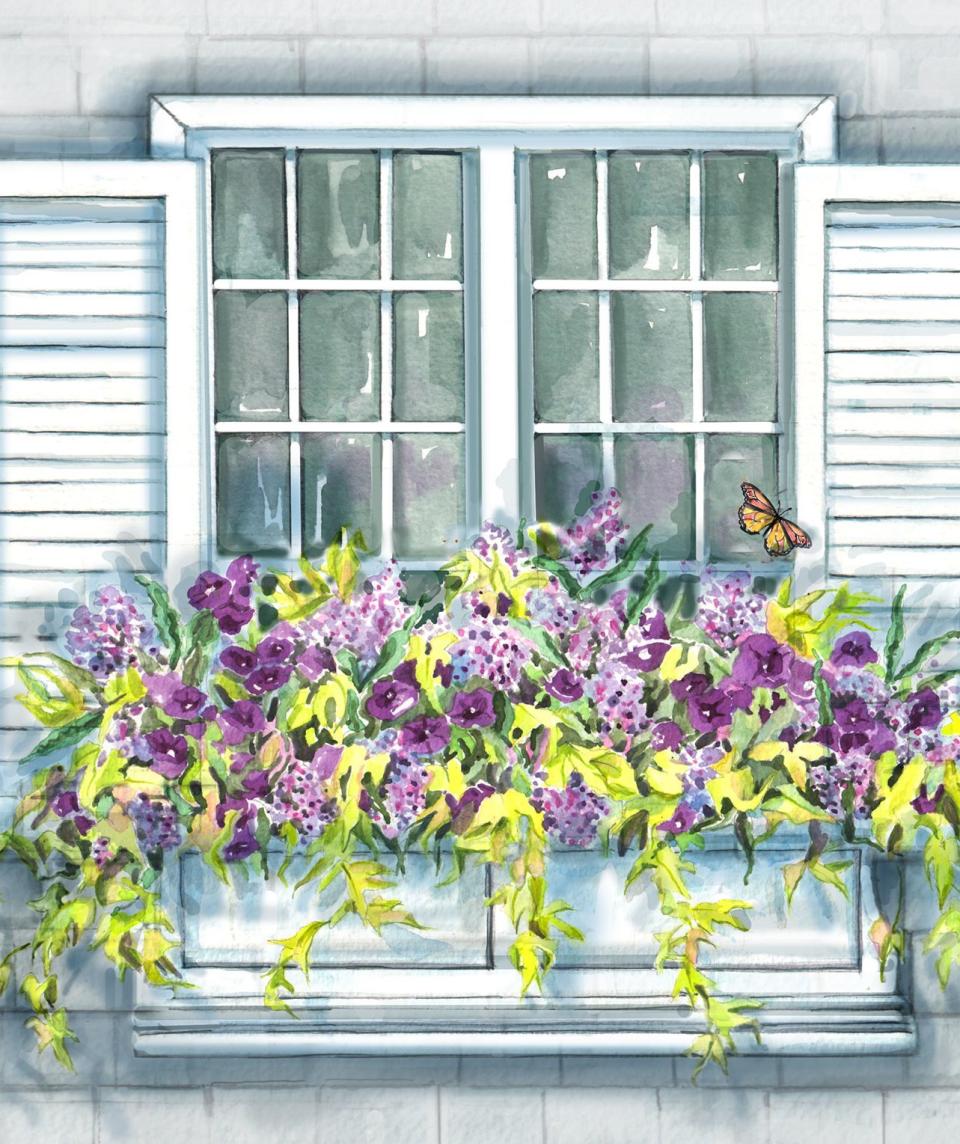4 Container Garden Ideas That Are 100% Fail-Proof
Four garden plans that you—yes, you, with the thumb of any color—can plant this spring to get the greenery you want, without having to dig up your whole yard.
Is there any spot more glorious than the garden center in fully blooming spring? The parking lot, empty throughout the winter months, teems with cars, soon to be brimming with flowers and optimistic visions of the perfect garden. This is the year to bring your vision to life. The fastest route to a satisfying garden experience is container gardening. You can brighten up a patio, deck, or porch with no backbreaking labor required. Just shop for plants, pots, and soil; assemble your design; and watch your greenery grow. Whether you want to dress up the front of your home or create a kitchen garden packed with fresh ingredients, we have a container plan to set you in the right direction.
RELATED: 6 Container Gardening Mistakes You’re Making (and How to Fix Them)
Lush Window Boxes
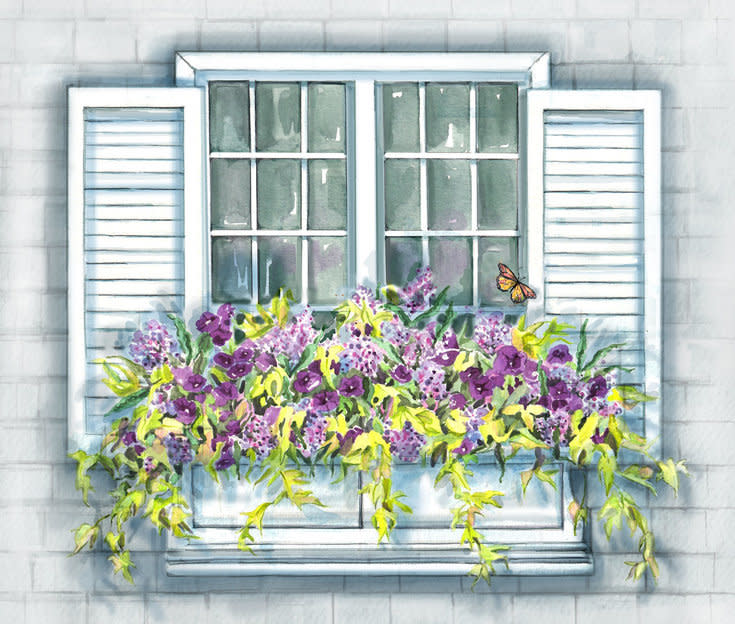
The formula: Two reblooming annuals in the same color family + a neutral filler
The container: Polyethylene boxes are lightweight but look substantial. Built-in reservoirs give you wiggle room when it comes to watering. Our pick: Fairfield window box (from $64;
).
Window boxes are not the place for tricky, occasional blooms. The flowers need to look good throughout the season, even when subjected to punishing, all-day sunlight. And anything attached to the front of your home is a multiseason commitment, so make sure the box ts with your architecture and taste. Choose flowers in warm colors (red, orange, yellow) or cool ones (pink, purple, maroon) and select no more than three kinds of plants to repeat down the box to keep it cohesive. Think a peachy nemesia plus a yellow calibrachoa, both of which pump out blooms all summer with no deadheading required. Add a white-blooming trailing plant, like Bacopa, to finish. Alternatively, pair purple petunias and verbenas with bright green sweet potato vine. Among outdoor greenery, “chartreuse functions as a neutral,” says Kerry Meyer, program director at the plant brand Proven Winners.
Plant picks: Full sun
Nemesia
Bacopa
Sweet Alyssum
Lantana
Calibrachoa
Geranium
Sweet Potato Vine
Verbena
Organic Living Wall
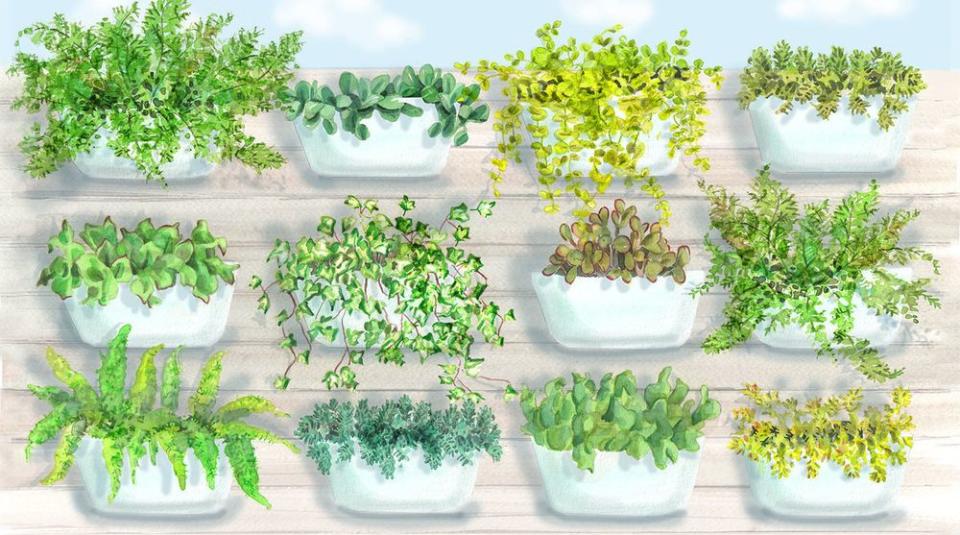
The formula: Fluffy ferns + showstopping leaves + trailing gap fillers
The container: Good drainage is vital. Our pick: Wally Eco Vertical Garden Wall Planters ($70 for 4;
).
Most living walls we see online require tons of care and don’t always age very well. Some plants die when others thrive, and it can take a lot of maintenance to keep everything looking lush. Vertical planters, hung close together, can give you a practical way to turn a shady wall into a pretty backdrop for alfresco get-togethers. Pick plants with a tropical feel—ones with feathery, dramatic foliage that will spill over the edge of planters. In a shady spot, try graceful ferns, delicate fuchsias, fleshy tuberous begonias, and caladiums with graphic leaves. With part sun, use fat spires of asparagus fern with trailing Lysimachia, fluffy chartreuse sedums, and sturdy succulents, like kalanchoe. Blending fine-textured plants with substantial succulents provides balance and keeps the eye moving from one plant to another. Be careful when watering ferns; they hate drying out but also shouldn’t be swimming.
Plant picks: Shade to part sun
Maidenhair Fern
Asparagus Fern
Ivy
Lysimachia
Bromeliad
Jade
A Plethora of Pots
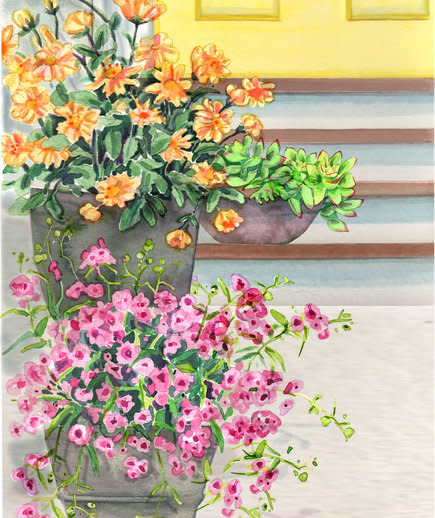
The formula: Big flowers + small flowers + colored foliage with flair
The container: Large containers make a statement but get heavy fast. Resin, fiberglass, or polyethylene pots won’t have quite the old-world gravitas of pottery, but they will be easier to move. Our pick: Brunello planters (from $18; gardeners.com).
Rather than cramming plants into one big container, achieve a grander effect by grouping individually planted pots at the corner of the patio, at the edge of the deck, or on either side of the front door. No more worrying about pairing a thirsty tropical with a succulent that prefers life on the dry side; just water them separately. Keep your palette limited: Think a burgundy coleus and two pinks—like angelonias or verbenas and petunias. “Use a large container and plant it with some elbow room,” says Meyer. That means three to five vigorous plants for each 16- to 18-inch pot. Depending on the plant, three might fill out quickly, while five can give an immediately fuller look. Choose pots that either match or are in the same color family; opt for neutrals for year-after-year versatility. Pots of different sizes make arrangements more interesting, and odd numbers look more pleasing.
Plant picks: Part sun or sun
Dahlia
Angelonia
Calceolaria
Aeonium
Coleus
Artemisia
The Container Kitchen
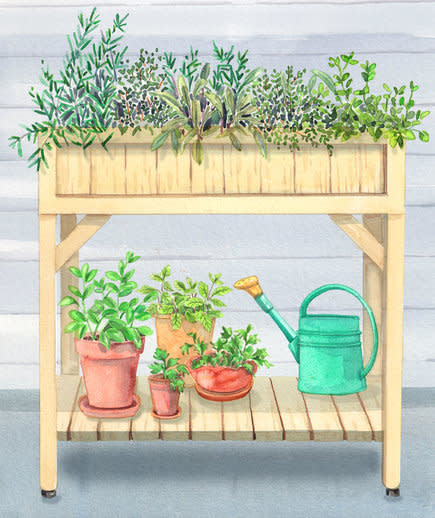
The formula: Mediterranean perennials + basil + mint + parsley
The container: A standing-height raised bed makes it a cinch to snip a bundle of herbs for dinner. Our pick: VegTrug Herb Garden Raised Bed ($150; williams-sonoma.com).
Herbs are generally easygoing growers. In a large container (at least 10 inches deep), Mediterranean herbs, such as oregano, rosemary, sage, and thyme, can live happily together, especially if you regularly harvest the leaves to keep them from growing into each other. They like fast-draining soil, lots of sun, and not too much water. Basil, mint, and parsley, on the other hand, like damper conditions, so it’s best to put them in their own pots. Basil is an annual that is notorious for going to flower, or “bolting,” at which point its leaves are less tasty. Snip off flowers as the weather heats up and use the leaves liberally, or replace the plant a few times during the summer. (A four-inch starter typically costs about as much as a large bunch of the herb at the grocery store.) Keep in mind that mint has a reputation for running rampant through the garden—even in a pot, its roots can escape through the drainage hole.
Plant picks: Sun (mostly)
Greek Oregano
Rosemary
Sage
Thyme
Mint (part shade)
Flat-Leaf Parsley
Illustrations by Lesley Buckingham
